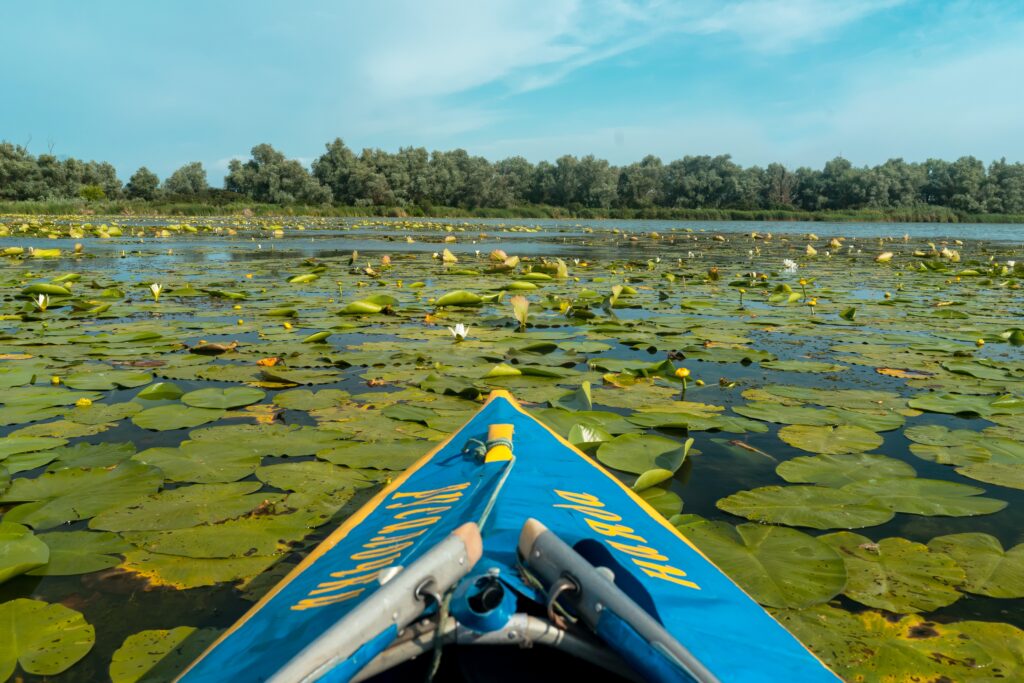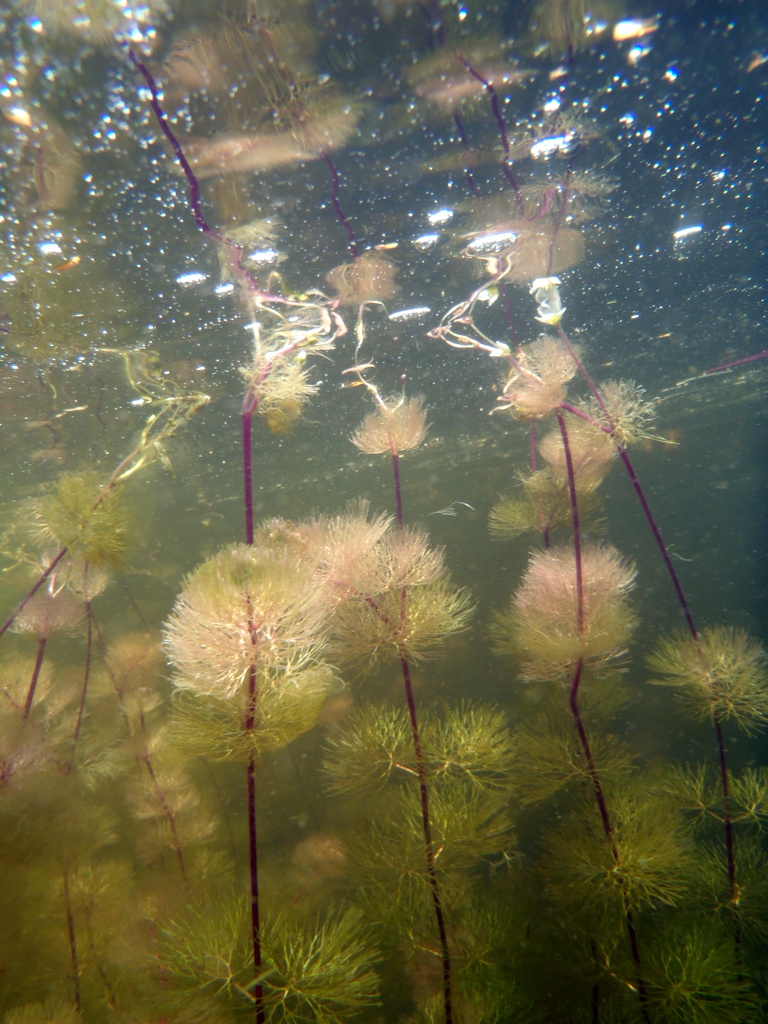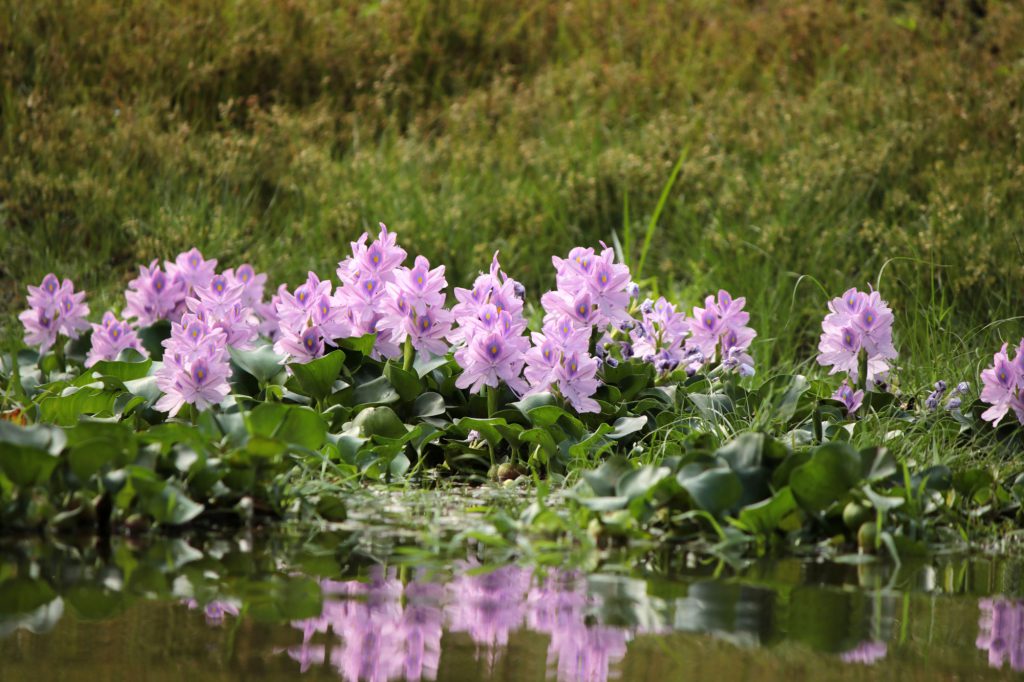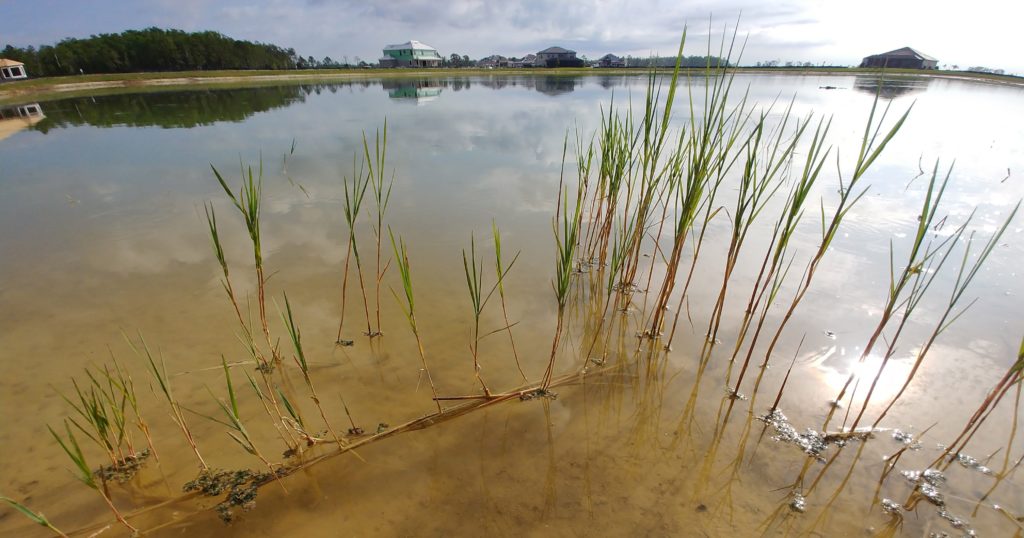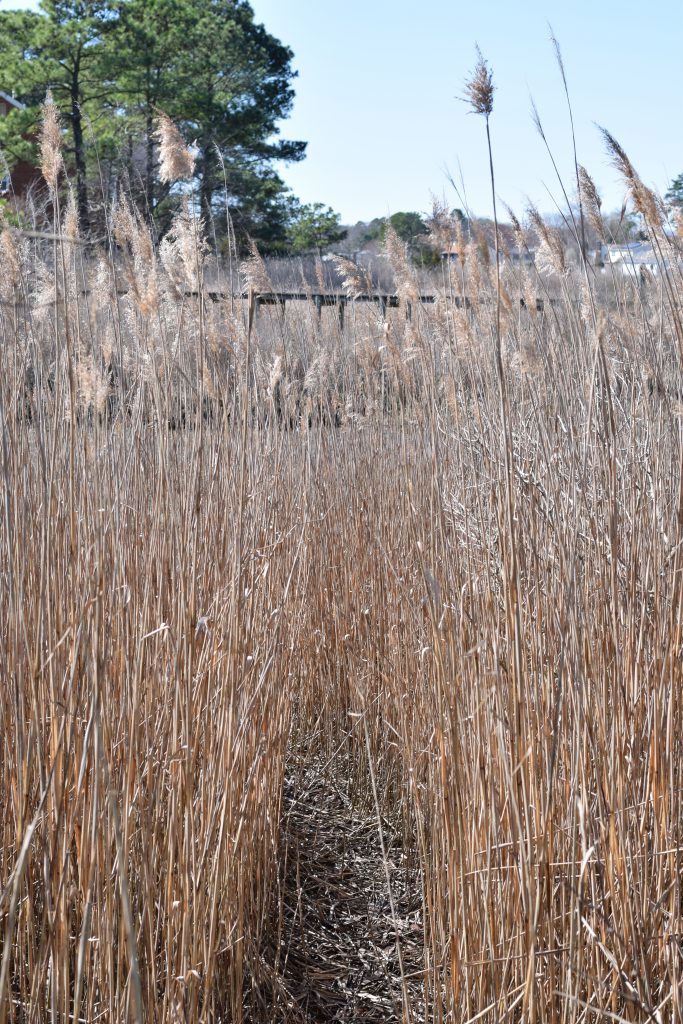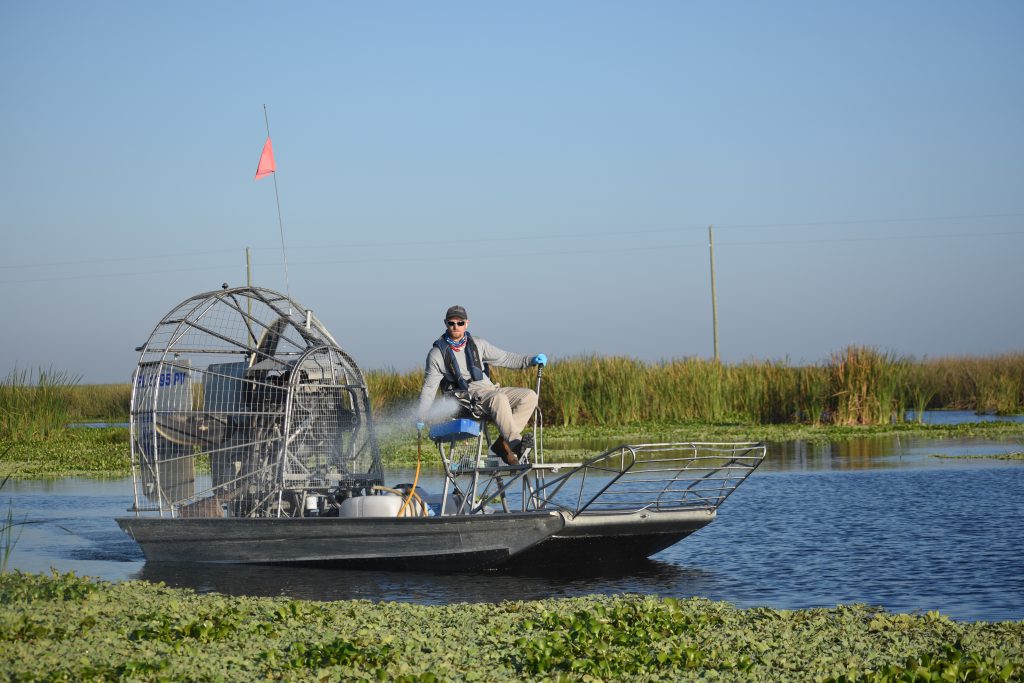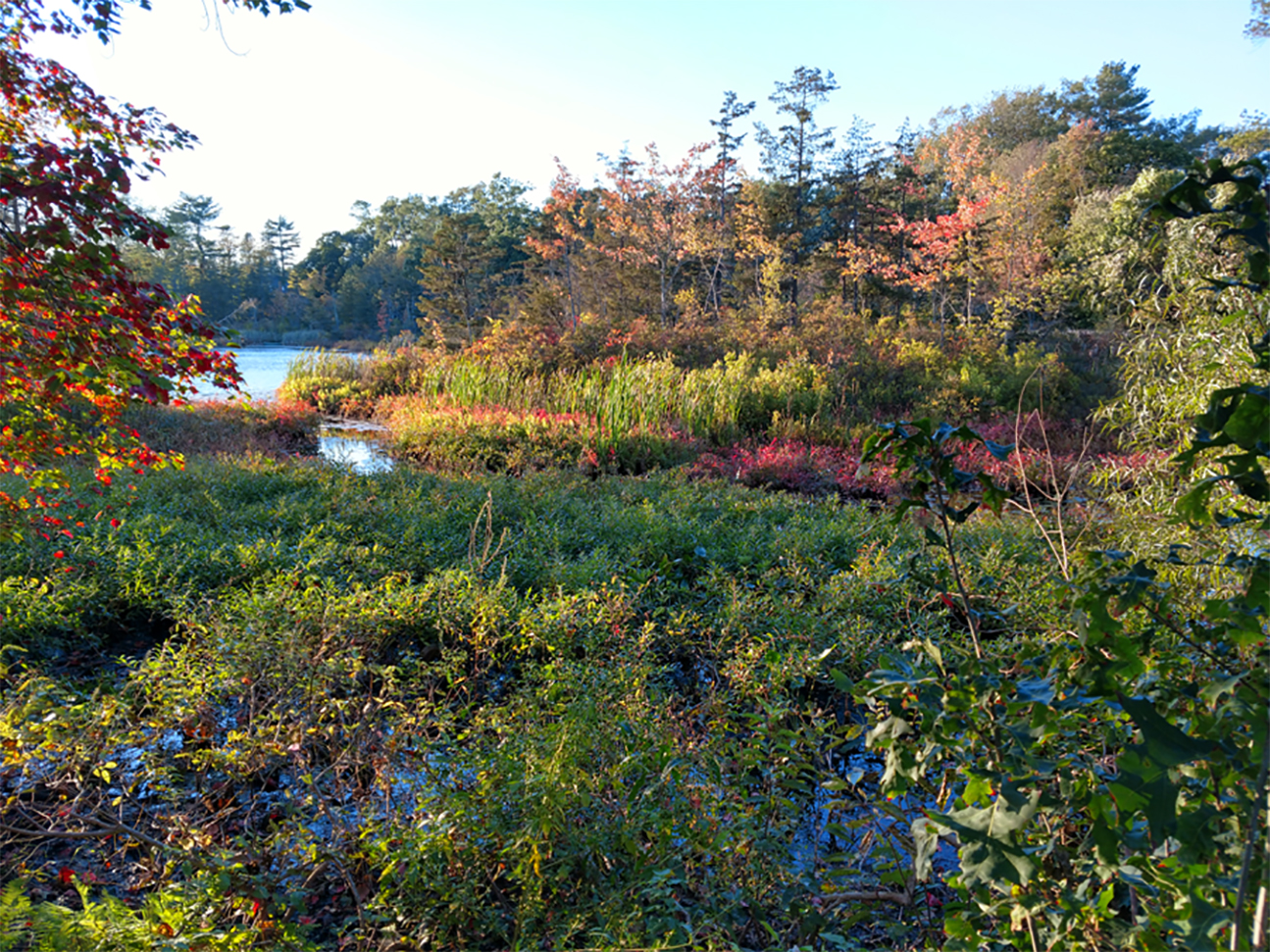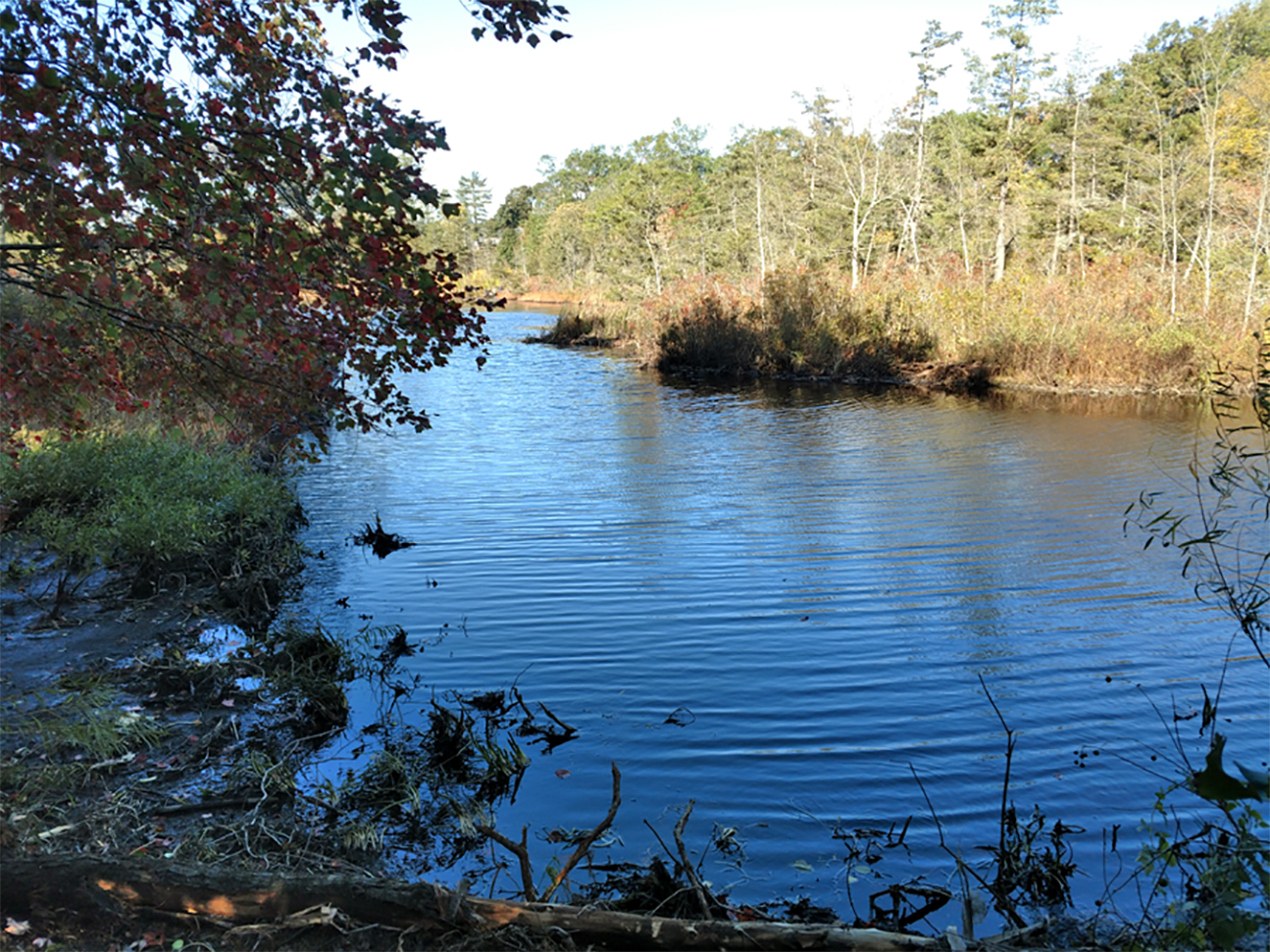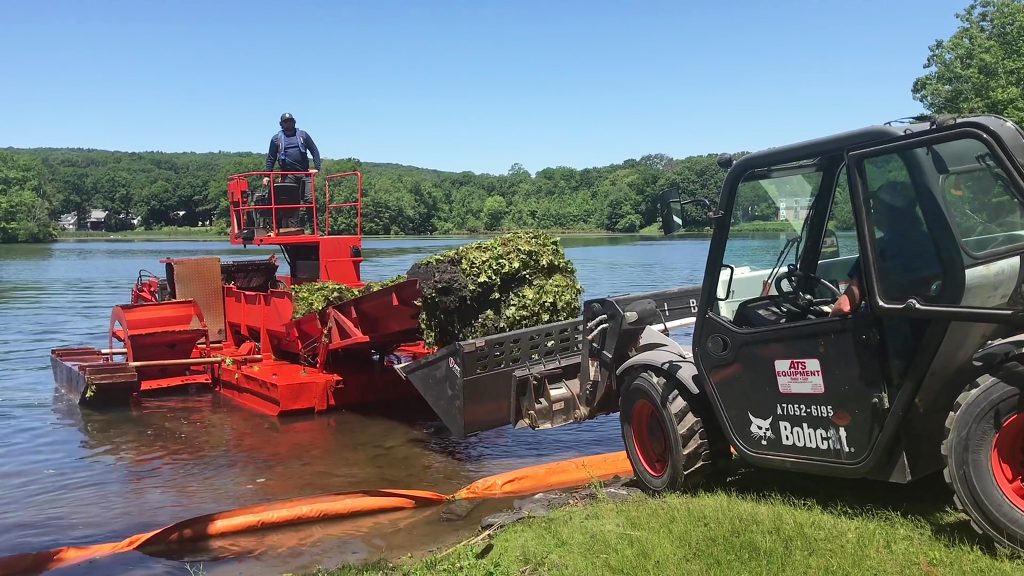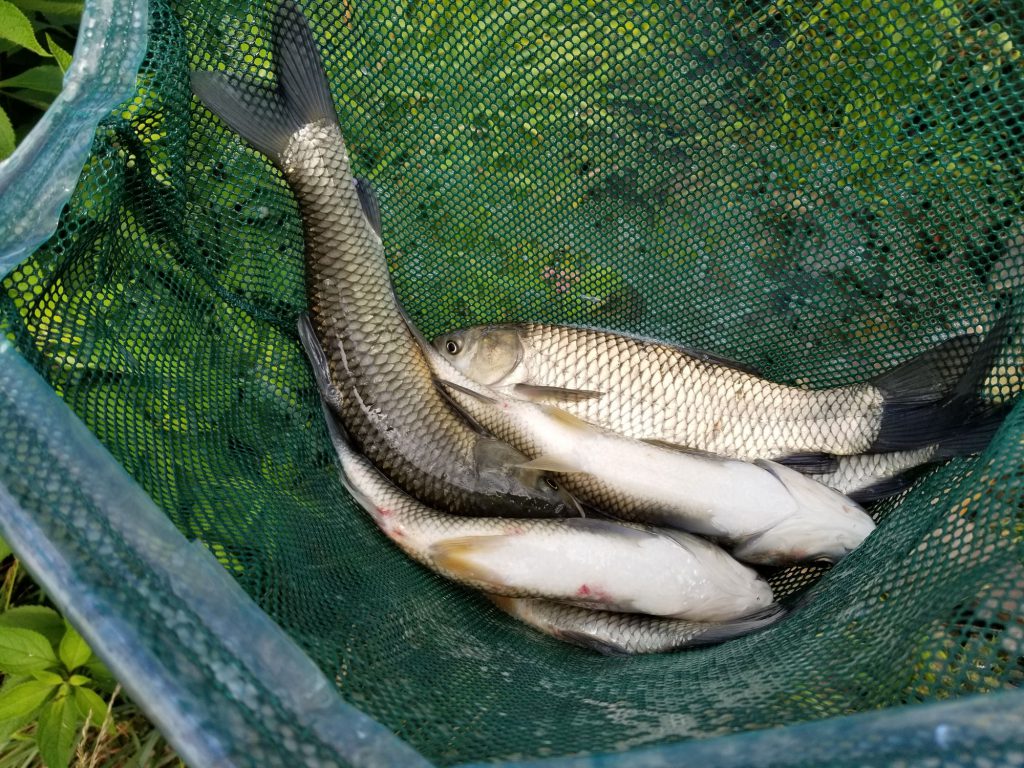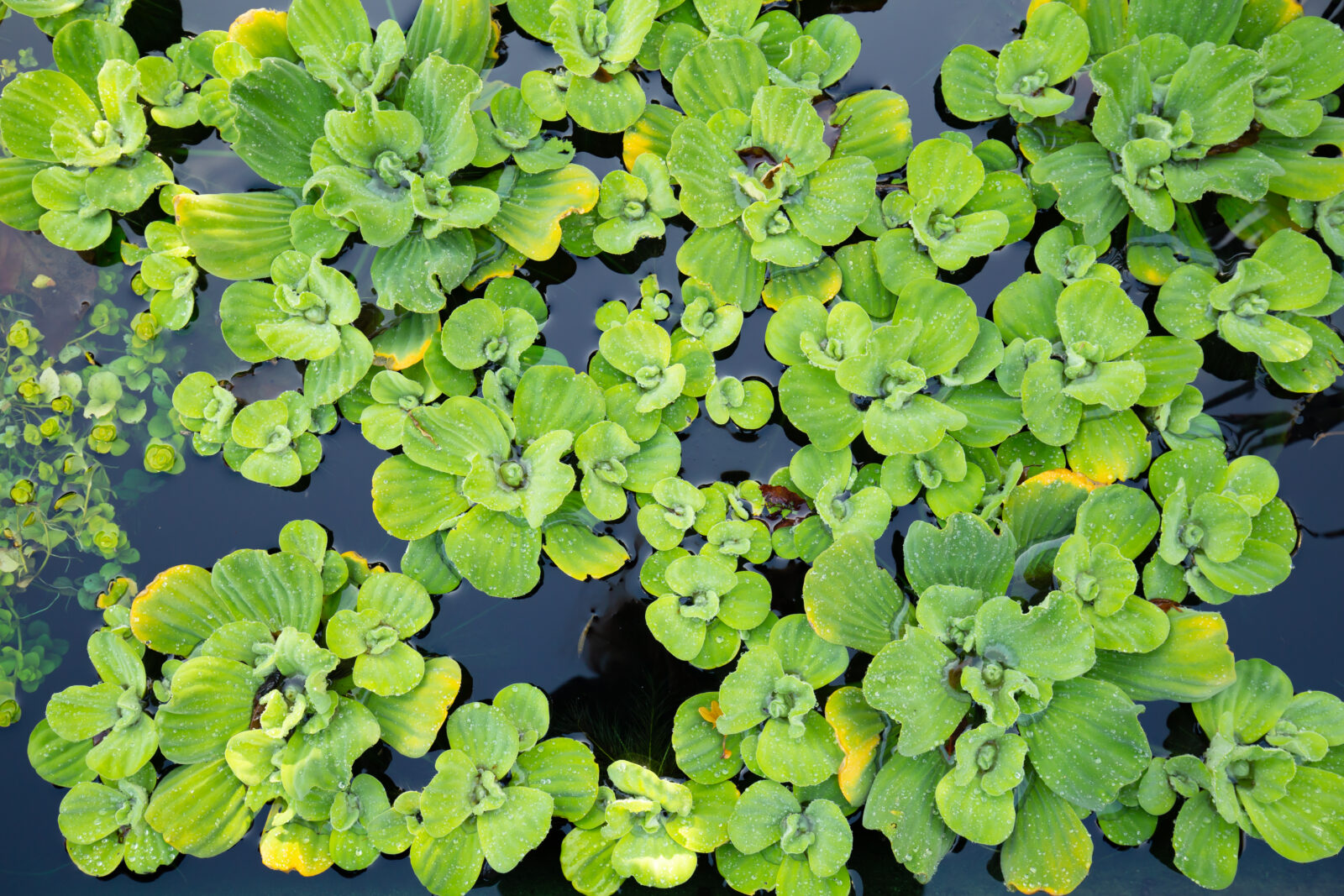
How to Remove Aquatic Weeds from Pond
As many property owners know, nuisance and invasive aquatic weeds can wreak havoc on your waterbody and cause expensive problems. Overgrowth of invasive aquatic plants can clog stormwater pond equipment, easily get caught in fishing lines or boat propellers, and interfere with swimming and other recreational activities. Aquatic plants are an essential part of a balanced ecosystem; however, in excess, they can cause more harm than good.
The Impact of Aquatic Weeds
Invasive weeds can cause serious damage to aquatic ecosystems. These plant species develop quickly and outcompete native vegetation for essential nutrients, habitat, and sunlight. Invasive species can be introduced into a lake or pond through human activity or wildlife and can also develop due to a combination of excess nutrients and warm weather. In addition, aquatic weeds can cause a chain reaction of invasive plant growth – without natural competition, they can easily spread to other waterbodies, degrading water quality. The best way to avoid this dangerous cycle is to prevent it, but when that is no longer an option, our team can help you navigate effective solutions.
Types of Invasive Pond Weeds
Invasive aquatic weeds are plants that have been introduced to an area outside of their natural ecosystem and have adapted to growing in, around, or near water. Invasive plant species can colonize rapidly and jeopardize your waterbody’s natural habitat. The first step to aquatic weed removal is identifying the nuisance or invasive vegetation you want to control.
Submerged Pond Plants
These plants grow under the surface of the water, but may reach the surface once they “top out.” Submerged plants cause the most problems for recreational boating and fishing, often getting caught in finishing lines or boat propellers. Common submerged pond weeds include hydrilla, fanwort, and mudmat all of which can quickly take over any aquatic ecosystem and become a threat to your waterbody’s health.
Floating Pond Plants
This type of plant is vascular with roots, but those roots are not established in the sediment below the surface. Typically, their leaves are visible floating on the surface of the water and they can be found in small water features or gardens. Floating plants can quickly become a nuisance as they move rapidly and spread over the surface of a lake or pond. The most common invasive floating pond weeds are water hyacinth, water lettuce, and water chestnut.
Wetland Plants
Wetlands are some of the most biodiverse ecosystems on the planet and are crucial to natural processes such as filtration and rainfall collection. Unfortunately, their diverse ecosystem also makes them vulnerable to invasive species. Typically, this plant species grows out of the water, in moist soil, or on the shoreline. Invasive wetland plants can also create issues in woodland areas that will ultimately reduce biodiversity. Species such as phragmites, flowering rush, and purple loosestrife are commonly found to invade wetland areas.
Management Strategies for Pond Weeds
Invasive lake and pond plant species may resemble native species, making it essential to work with a professional for identification. Once you’ve identified which invasive plant species you want to control, it’s time to explore pond management options. From there, our team can help you determine the best course of action to restore balance to your lake, stormwater pond, or wetland.
Highly Targeted Herbicides
Herbicides can be a highly effective tool to safely and quickly control invasive aquatic weeds. All herbicides are registered through a rigorous process directed by the Environmental Protection Agency (EPA). Herbicides can be professionally applied by boat, backpack sprayers or drones to target vegetation in hard-to-reach or remote areas. Additionally, aerial drones help optimize product usage and limit the impact of herbicides on non-target species.
Newer herbicide technologies can be used for the targeted control of invasive aquatic weeds, without affecting native plants. One of these herbicides is ProcellaCOR. ProcellaCOR utilizes low dosing to allow for a 100-1000x reduction in the active ingredient used to eliminate noxious weeds. ProcellaCOR is classified as a “Reduced Risk” by the EPA, meaning it can be applied to lakes and ponds without impacting native beneficial vegetation. All EPA-registered herbicides are considered low-risk and effective when following the label instructions and applied by a professional. ProcellaCOR, in particular, can help achieve long-term control of aquatic weeds without the need for costly reapplication.
Natural Pond Weed Removal Methods
If you’re looking for a natural solution, there are many aquatic weed removal tools available. Natural management solutions can vary from physical removal to biological control.
Hydro-Raking
The hydro-rake is a floating barge with a backhoe and rake attachments. Also known as mechanical raking, this technique is used to remove rooted vegetation or emergent plants. It can be used in water depths ranging from 18 inches to 10 feet. The technique can clear muck and debris from the bottom of your waterbody, effectively reducing the overall nutrient load and restoring balance to the ecosystem.
Mechanical Harvesting
A mechanical harvester or aquatic vegetation cutter can be used for selective control of pond weeds. Mechanical harvesting is best suited for removing dense floating vegetation. The harvester contains a cutting mechanism and hydraulic lifts that raise and lower the cutting depth. They are powered by paddle wheels that allow for a high degree of maneuverability and use pontoons to stay afloat. This solution is ideal for season-long control of floating plant species.
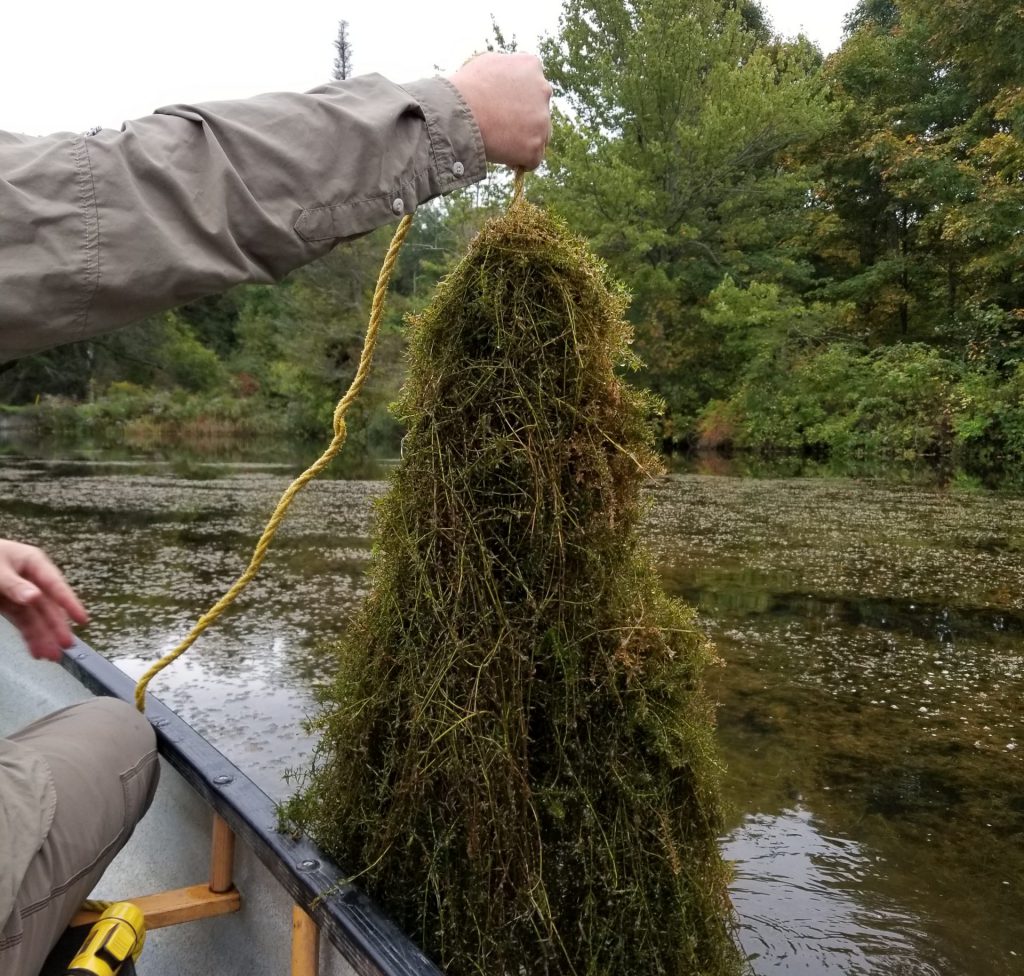
Hand Pulling
While hand pulling isn’t as effective or recommended, it can be ideal for maintenance between harvesting or ponds with minor growth. Since invasive species spread through fragmentation, hand pulling should be done under the guidance of a professional.
Triploid Grass Carp
Triploid Grass Carp are a non-native species that can be used to naturally restore the ecological balance of your waterbody. These species are sterilized, meaning they can’t reproduce or become invasive to your waterbody. Grass carp are capable of consuming 20-100% of their body weight in submerged plants a day, making them an ideal solution for lake weed removal. Although this solution is very effective, it’s important to work with a professional to make sure all permits and regulations are followed.
A downside to Triploid Grass Carp is that they consume all types of aquatic vegetation, therefore, you must monitor the species to ensure that beneficial shoreline vegetation isn’t being affected. Always work with a professional to ensure stocking Grass Carp is legal in your area and is the right solution for your pond and goals.
Educate Others to Help Prevent the Spread of Invasive Pond Weeds
Lake maintenance and monitoring are key components to supporting the health of your waterbody. Many people are unaware of their role in the spread of invasive species. Educate and encourage members of your community to be on the lookout for invasive species and stop the spread before it gets worse.
Tips to Prevent the Spread of Invasive Weeds:
- Rinse boats and other recreational equipment of plant fragments after leaving a waterbody to prevent spreading a species to another waterbody
- Pick up pet waste, which can inadvertently fertilize invasive plants
- Educate others on the importance of invasive species identification; some invasive weeds like purple loosestrife are beautiful and tempting to replant as landscaping.
Enjoy Beautiful Water
These small adjustments can have a significant impact on our natural environment and our local communities. However, proactive solutions are the best way to control nuisance aquatic weeds and prevent costly damage down the line. With regular inspections, our pond management experts can identify problem areas before they have a chance to escalate. Contact our team for a lake consultation to get started and achieve clean, beautiful water!
SOLitude Lake Management is a nationwide environmental firm committed to providing sustainable solutions that improve water quality, enhance beauty and preserve natural resources.
SOLitude’s team of aquatic scientists specializes in the development and execution of customized lake, stormwater pond, wetland and fisheries management programs. Services include water quality testing and restoration, algae and aquatic weed control, installation and maintenance of fountains and aeration systems, shoreline erosion control, muck and sediment removal and invasive species management. SOLitude partners with homeowners associations, golf courses, private landowners, businesses and municipalities. SOLitude Lake Management is part of Rentokil, a leading business services company, operating across the United States, Canada and Puerto Rico.
For more information, visit SOLitude Lake Management at solitudelakemanagement.com, and connect on Facebook, LinkedIn and Twitter.








